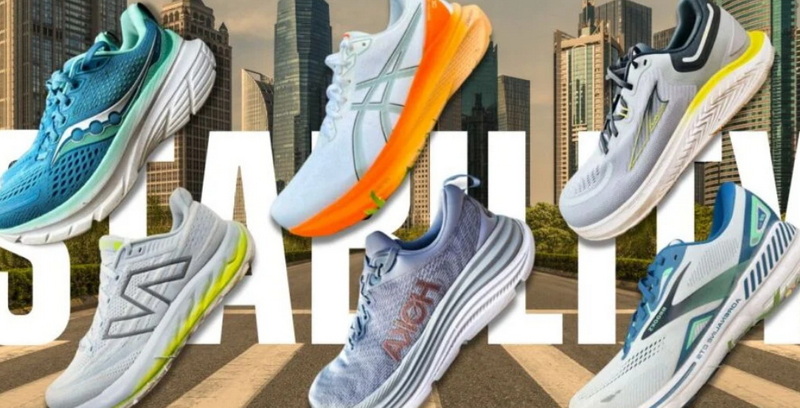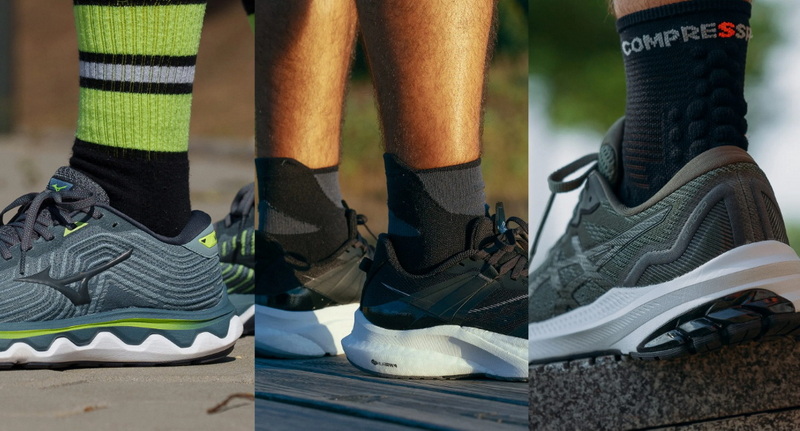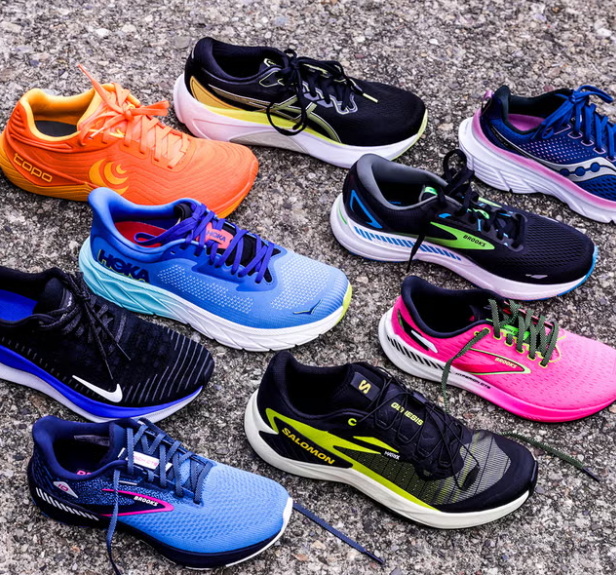Content Menu
● Understanding Stability Running Shoes
● Top Stability Running Shoes for Women
>> Brooks Adrenaline GTS 23
>> Asics Gel-Kayano 30
>> Hoka Arahi 7
>> New Balance 860v14
>> Saucony Guide 17
● Key Features to Consider
● How to Choose the Right Stability Running Shoe
● Importance of Proper Fit
● Maintenance Tips for Running Shoes
● Common Mistakes When Choosing Running Shoes
● Conclusion
● FAQ
>> 1. What are stability running shoes?
>> 2. How do I know if I need stability shoes?
>> 3. Can I use stability shoes for long-distance running?
>> 4. Are all stability shoes heavy?
>> 5. How often should I replace my running shoes?
Finding the right running shoes is crucial for both performance and injury prevention, especially for women who may experience different foot dynamics compared to men. Stability running shoes are specifically designed to provide support for runners who overpronate, meaning their feet roll inward excessively during their stride. This article will explore some of the best stability running shoes available for women in 2024, highlighting their features, benefits, and what makes them stand out.

Understanding Stability Running Shoes
Stability running shoes are engineered to offer a balance of cushioning and support. They typically feature:
- Medial Posts: Denser foam on the inner side of the shoe to help prevent excessive inward rolling.
- GuideRails: A newer technology that provides support without restricting natural foot movement.
- Cushioning Systems: Advanced foam materials that absorb shock while providing responsiveness.
These features help reduce the risk of injuries such as shin splints, runner's knee, and plantar fasciitis by promoting a more stable gait.
Top Stability Running Shoes for Women
Here's a look at some of the best stability running shoes for women in 2024:
Brooks Adrenaline GTS 23
The Brooks Adrenaline GTS 23 is a favorite among runners for its perfect blend of cushioning and stability.
- Cushioning: It utilizes BioMoGo DNA and DNA LOFT cushioning for a soft feel underfoot.
- Support: The GuideRails technology keeps excess movement in check, allowing for a natural stride.
- Durability: The shoe features a durable rubber outsole with deep flex grooves for enhanced flexibility.
Asics Gel-Kayano 30
The Asics Gel-Kayano series is renowned for its comfort and stability.
- Cushioning: The shoe incorporates FlyteFoam technology and GEL cushioning to provide excellent shock absorption.
- Support: The Dynamic DuoMax Support System enhances stability while maintaining lightweight performance.
- Fit: Its engineered mesh upper offers breathability and a secure fit.
Hoka Arahi 7
The Hoka Arahi 7 is celebrated for its lightweight design combined with effective support.
- Cushioning: Features a J-Frame midsole that provides support without being overly rigid.
- Stability: The wide base enhances stability during runs, making it ideal for long distances.
- Comfort: A plush tongue and collar ensure comfort during extended wear.
New Balance 860v14
The New Balance 860v14 is designed for runners seeking reliable support.
- Cushioning: It features Fresh Foam X technology that delivers a smooth ride.
- Support: A new stability plate helps prevent overpronation effectively.
- Breathability: The upper is made from lightweight mesh, promoting airflow.
Saucony Guide 17
The Saucony Guide 17 offers exceptional stability and comfort.
- Cushioning: It uses PWRRUN cushioning that provides a soft yet responsive feel.
- Support: The shoe includes GuideRails technology to keep your foot aligned during runs.
- Durability: Its rubber outsole ensures traction and longevity on various surfaces.
Key Features to Consider
When selecting the best stability running shoes, consider the following features:
- Arch Support: Choose shoes that match your arch type (low, normal, or high) to ensure proper alignment.
- Fit and Comfort: Ensure there's enough room in the toe box and that the shoe feels secure without being too tight.
- Weight: Lighter shoes can enhance speed but may sacrifice some cushioning. Find a balance that suits your running style.
How to Choose the Right Stability Running Shoe
1. Assess Your Gait: Visit a specialty running store to get a gait analysis. Understanding whether you overpronate or have a neutral gait will guide your shoe choice.
2. Try Before You Buy: Always try on shoes with the socks you intend to wear while running. Walk or jog around the store to test comfort and fit.
3. Consider Your Running Style: If you're training for long distances, prioritize cushioning. For speed work, look for lighter options with responsive cushioning.
Importance of Proper Fit
A proper fit is paramount when it comes to running shoes. Ill-fitting shoes can lead to blisters, calluses, and even more serious injuries like stress fractures. Here are some tips to ensure you find the right fit:
- Length and Width: Your toes should have about half an inch of space at the front of the shoe. The width should feel snug but not tight; your foot should not spill over the edges of the shoe.
- Heel Lockdown: When laced up, your heel should stay in place without slipping out of the back of the shoe as you run.
- Try Different Brands: Different brands have varying fits; what works for one person might not work for another. Don't hesitate to try multiple brands until you find one that feels just right.

Maintenance Tips for Running Shoes
To extend the life of your stability running shoes, consider these maintenance tips:
- Rotate Shoes: If you run frequently, consider having at least two pairs of shoes that you rotate between. This allows each pair time to decompress between runs.
- Keep Them Clean: Remove dirt and debris after each run. Use a damp cloth or soft brush; avoid putting them in the washing machine as it can damage materials.
- Store Properly: Keep your shoes in a cool, dry place away from direct sunlight to prevent materials from breaking down prematurely.
Common Mistakes When Choosing Running Shoes
Choosing running shoes can be overwhelming, especially with so many options available. Here are some common mistakes to avoid:
1. Not Trying Shoes On First: Always try on shoes before purchasing them. Sizes can vary significantly between brands and models.
2. Choosing Style Over Functionality: While aesthetics are important, prioritize comfort and support over looks when selecting your running shoes.
3. Ignoring Wear Patterns on Old Shoes: Examine your old running shoes for wear patterns; this can provide insight into how your foot strikes the ground and what type of support you may need in new shoes.
4. Buying Shoes Too Early or Late in the Day: Feet tend to swell throughout the day; try on shoes later in the day when your feet are at their largest for a more accurate fit.
5. Forgetting About Socks: The type of socks you wear can affect how your shoes fit. Always wear similar socks when trying on new shoes as you would during runs.
Conclusion
Choosing the right stability running shoe can significantly impact your running experience, helping you avoid injuries while enhancing performance. The Brooks Adrenaline GTS 23, Asics Gel-Kayano 30, Hoka Arahi 7, New Balance 860v14, and Saucony Guide 17 are among the top choices available in 2024. Each shoe offers unique features tailored to different needs, so it's essential to consider your individual requirements when making a selection.
Investing time into finding the right pair will not only improve your comfort but also enhance your overall running experience by providing adequate support and cushioning where it's needed most.

FAQ
1. What are stability running shoes?
Stability running shoes are designed to provide support for runners who overpronate by preventing excessive inward rolling of the foot during each stride.
2. How do I know if I need stability shoes?
You can determine if you need stability shoes through a gait analysis at a specialty running store or by observing if you experience discomfort or injuries related to overpronation.
3. Can I use stability shoes for long-distance running?
Yes, many stability shoes are designed with adequate cushioning and support suitable for long-distance runs, helping prevent injuries over time.
4. Are all stability shoes heavy?
No, modern stability shoes are available in lightweight designs that still offer excellent support without compromising performance or comfort.
5. How often should I replace my running shoes?
It's generally recommended to replace running shoes every 300 to 500 miles, depending on wear patterns and how they feel during runs.

















